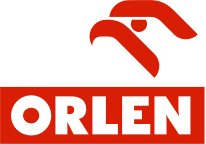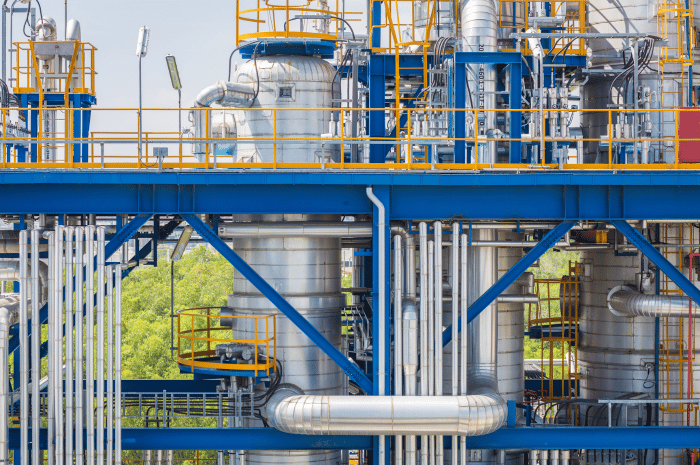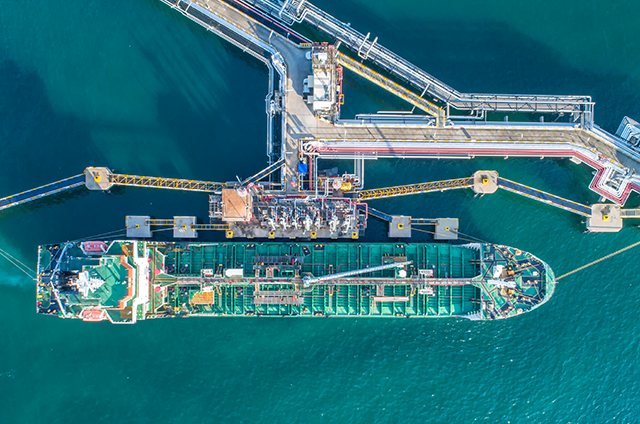History
- 1958: Płock selected as the site for Poland’s first large-scale refinery and petrochemical complex, then known as the Mazovia Refinery and Petrochemical Plant.
- 1964: Operations began with an initial crude oil processing capacity of 6 million tonnes/year.
- 1997–2022: Multiple expansions, including hydrocrackers (1997, 1999, 2003), hydrodesulfurization units (2006), and a visbreaking unit (2022) to boost diesel and petrol yields.
- Oct 2005: Completion of the Olefins II project.
- 2015–2017: Modernization of the CHP plant and installation of a 596 MWe gas-steam unit.
- December 2024: Olefins III expansion project halted due to cost escalation.
Feedstock
- Crude oil: Originally, crude oil was primarily supplied via the Druzhba pipeline from Russia, but deliveries of Russian oil to Poland through the Druzhba pipeline ceased in February 2023. Since then, the northern branch of the Druzhba pipeline, which passes through Poland and supplies the Płock refinery, has has been used to transport Kazakh oil, and Poland has shifted its crude oil imports to alternative sources, primarily via the Naftoport terminal in Gdańsk and other global suppliers.
- Petrochemical feedstocks: Naphtha, LPG, and other intermediates from the refinery’s distillation and cracking units are routed to the olefin plant.
Process Technologies and Capacities
| Process |
Licensor |
Technology |
Capacity |
Status |
Start-up Date |
| Atmospheric Distillation |
n.d. |
Atmospheric Distillation |
16.3 Mt/year (276,000 bbl/day) |
Running |
1964 |
| Fluid Catalytic Cracker (FCC) |
UOP |
Fluid Catalytic Cracking |
4,578 tonnes/day feedstock |
Running |
n.d. |
| Hydrocracker |
UOP |
Hydrocracking |
n.d. |
Running |
1997-2003 |
| Visbreaking Unit |
n.d. |
Visbreaking |
3,300 tonnes/day feedstock |
Running |
2022 |
| Steam Cracker (Olefins I) |
n.d. |
Steam Cracking |
340,000 tonnes/year ethylene |
Shutdown |
1971 (shutdown with Olefins II revamp) |
| Steam Cracker (Olefins II) |
Lummus |
Steam Cracking |
700,000 tonnes/year ethylene, 380,000 tonnes/year propylene |
Running |
1977-1980 (original), revamp completed October 2005 |
| Steam Cracker (Olefins III) |
KBR |
SCORE Steam Cracking |
740,000 tonnes/year ethylene |
Construction halted |
Post-2030 (redesigned project) |
| Q-Max Cumene Unit |
Honeywell UOP |
Q-Max Cumene |
200,000 tonnes/year phenol |
Running |
n.d. |
| Phenol 3G Unit |
Honeywell UOP |
Phenol 3G |
Integrated with cumene unit |
Running |
n.d. |
| Phenol/Acetone Unit |
n.d. |
Phenol/Acetone |
55,000 tonnes/year phenol, 34,000 tonnes/year acetone |
Shutdown planned |
1965 (shutdown end of 2025) |
| LDPE Plant (Existing) |
n.d. |
Low Density Polyethylene |
100,000 tonnes/year |
Running |
n.d. (acquired by Orlen 2023) |
| LDPE Plant (New) |
LyondellBasell |
Lupotech T LDPE |
250,000 tonnes/year |
In licensing phase |
TBD |
| Combined Heat & Power |
n.d. |
Combined Heat & Power |
413.6 MW electrical, 2,149 MW thermal |
Running |
2015-2017 (latest modernization) |
Products
Refinery Outputs:
- Fuels: Gasoline, diesel, jet fuel
- Specialty products: Lubricants, bitumen, paraffin, sulfur
- Intermediates: Xylene, vacuum gasoil, LPG
Petrochemical Products:
- Olefins: ethylene, propylene
- Chemicals and intermediates: ethylene oxide, ethylene glycol, phenol, acetone, sulfuric acid
- Polymers: LDPE, other plastics
- Aromatics: benzene, toluene
Key Recent Developments
Olefins III Project Status
The ambitious Olefins III project was officially halted in December 2024 after costs escalated from the original PLN 8.3 billion estimate to as much as PLN 51 billion. The project is being redesigned with a reduced scope focusing on a new 740,000 tonnes/year ethylene steam cracker using KBR's SCORE technology, with commissioning now planned for no earlier than 2030.
Planned Units from Original Olefins III
Several units that were part of the original Olefins III complex remain in planning status, including:
- Pyrolysis Gasoline Hydrogenation (PGH) unit
- Ethyl Tertiary-Butyl Ether (ETBE) unit
- Styrene unit
- Ethylene Oxide & Glycol plant
Phenol Operations Closure
Orlen announced plans to decommission its nearly 60-year-old phenol and acetone unit by the end of 2025, citing technical and environmental considerations. The unit produces 55,000 tonnes/year of phenol and 34,000 tonnes/year of acetone.
LDPE Plants
- In Jan 2023, PKN ORLEN closed the transaction to acquire from Basell Orlen Polyolefins the business involving the production and marketing of LDPE. The acquired production capacity is 100 thousand tonnes per year.
- LyondellBasell has licensed its Lupotech T high-pressure polyethylene technology to PKN Orlen for a new 250,000 tonnes/year LDPE plant at the Płock site. This project is currently in the licensing phase with no confirmed startup date.
Polyolefin Joint Venture
The existing polyolefin production continues through Basell Orlen Polyolefins, a 50/50 joint venture between PKN Orlen and LyondellBasell established in 2003. The joint venture operates polypropylene and polyethylene plants with combined capacity of 800,000 tonnes per year.
Description based on Perplexity A.I. assisted Research, 14th Jun 2025.















